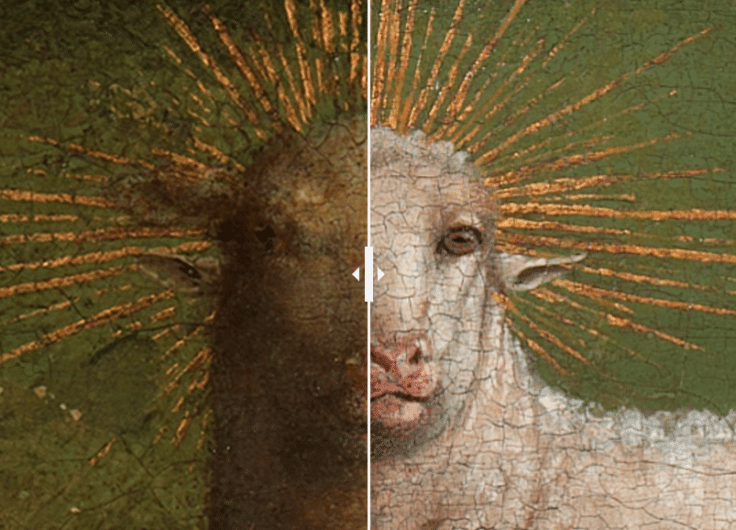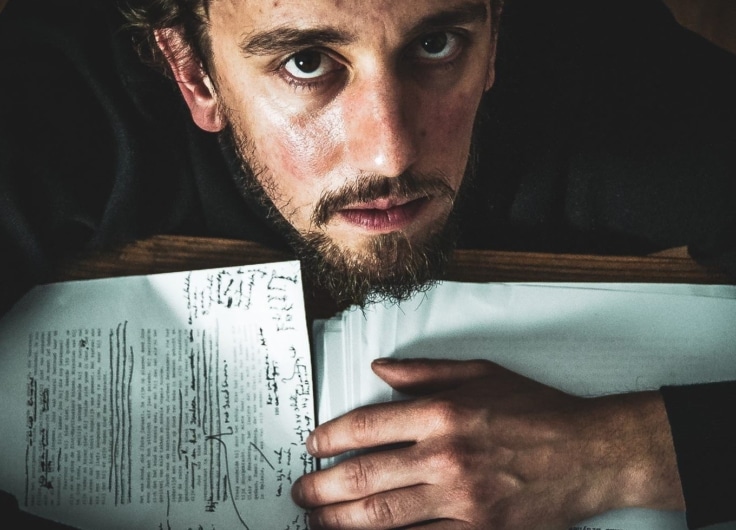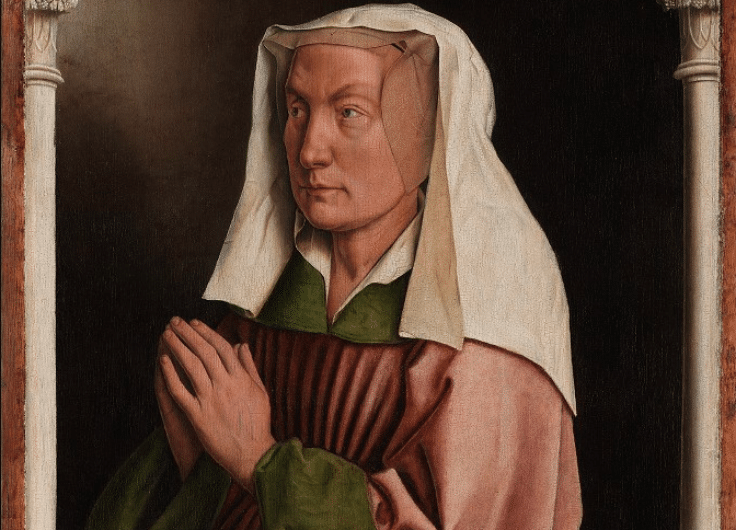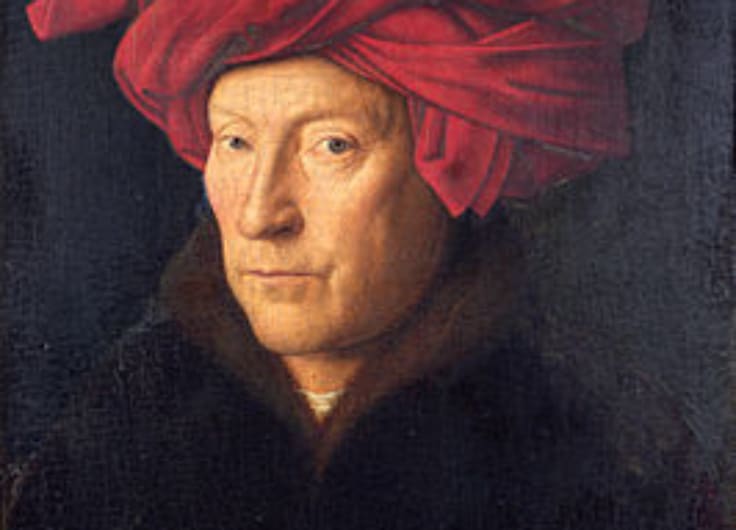Following Rubens in 2018 and Bruegel in 2019, in 2020 Flanders is set to pay tribute to Jan van Eyck. While the Flemish master will also be celebrated elsewhere in Flanders, the most impressive tribute to this technical innovator and pictor doctus will be presented in Ghent, where the Museum of Fine Arts is organising its biggest ever Jan van Eyck exhibition.
The Museum of Fine Arts in Ghent is preparing to go all out with Van Eyck. An Optical Revolution. Central to the exhibition are the outer panels of the altarpiece the Adoration of the Mystic Lamb, which has been in Ghent’s St Bavo Cathedral since 1432 and has recently been restored by the Royal Institute for Cultural Heritage. Exceptionally, these panels will be on show separately outside the cathedral from 1 February to 30 April, displayed at eye level, so that the magnificent colours, the spectacular details and the evocative textural effects can be admired by everyone from close up. The panels are complemented by more than half of Jan van Eyck’s famous body of work. Paintings have been loaned from Vienna, Berlin, Madrid, London, Turin, Washington and elsewhere.
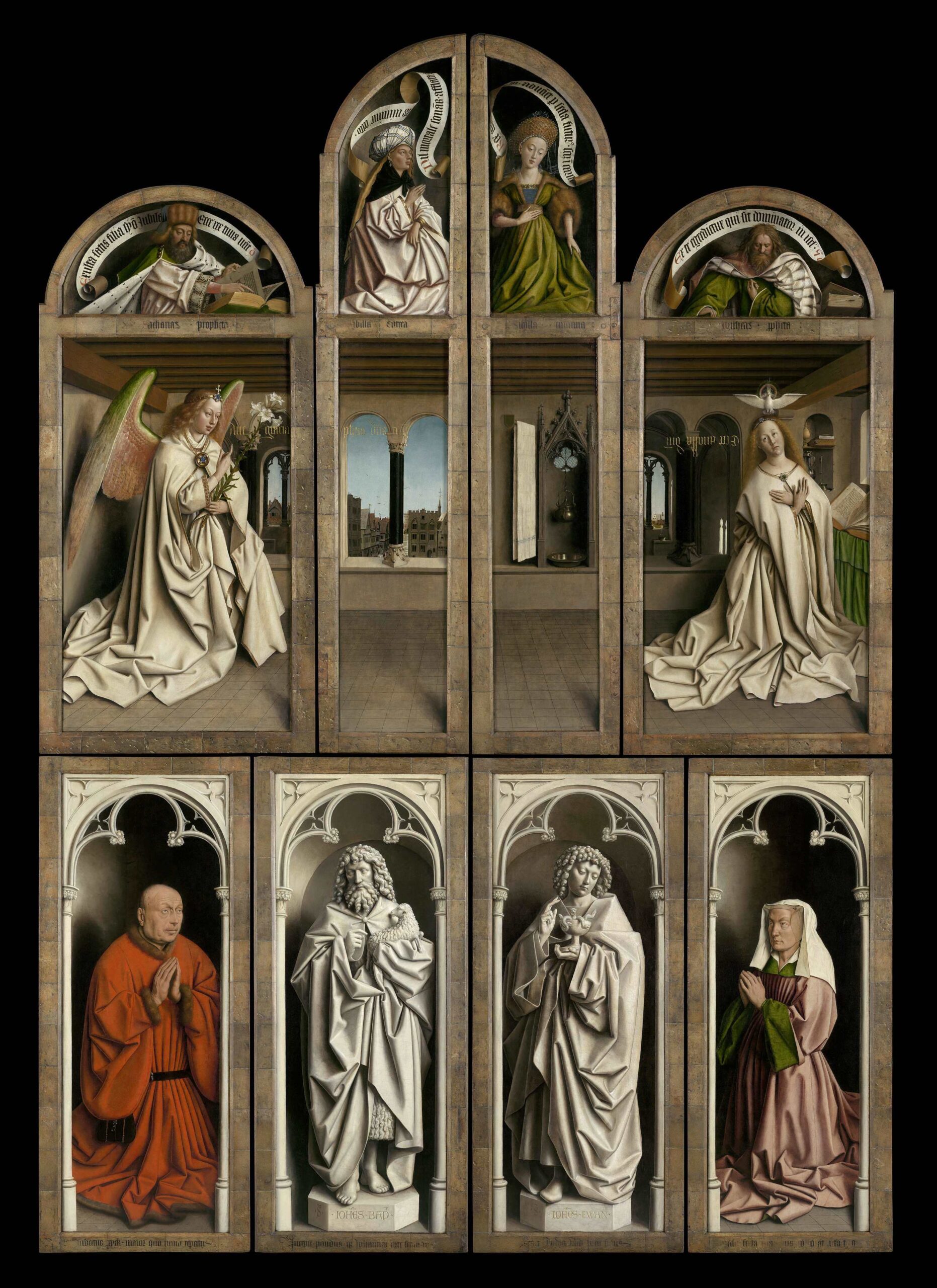 Jan and Hubert van Eyck, outer panels of The Adoration of the Mystic Lamb, 1432, St Bavo’s Cathedral, Ghent
Jan and Hubert van Eyck, outer panels of The Adoration of the Mystic Lamb, 1432, St Bavo’s Cathedral, Ghent© www.lukasweb.be - Art in Flanders vzw
Jan van Eyck (c. 1390-1441) is thought to have come from a family of artists from Maasland. Like his father, his brothers Hubert and Lambert and his sister Margareta also practised painting. His career is inextricably linked with the life of the Burgundian court. In 1425 he was appointed as court painter and chamberlain in the service of Philip the Good, who five years later was to reunite the Low Countries in the Burgundian Netherlands. In the social life of this flamboyant duke’s court, the magnificentia, the external show of pomp and splendour were of prime importance, which worked in favour of luxury goods. Besides the Burgundian court, the exhibition also focuses attention on the wider world in which Van Eyck lived and worked. This consisted of his family and craft, the artisanal environment and the circuit of mobile craftsmen, the flourishing economy in cities such as Ghent and Bruges and new bourgeois customers.
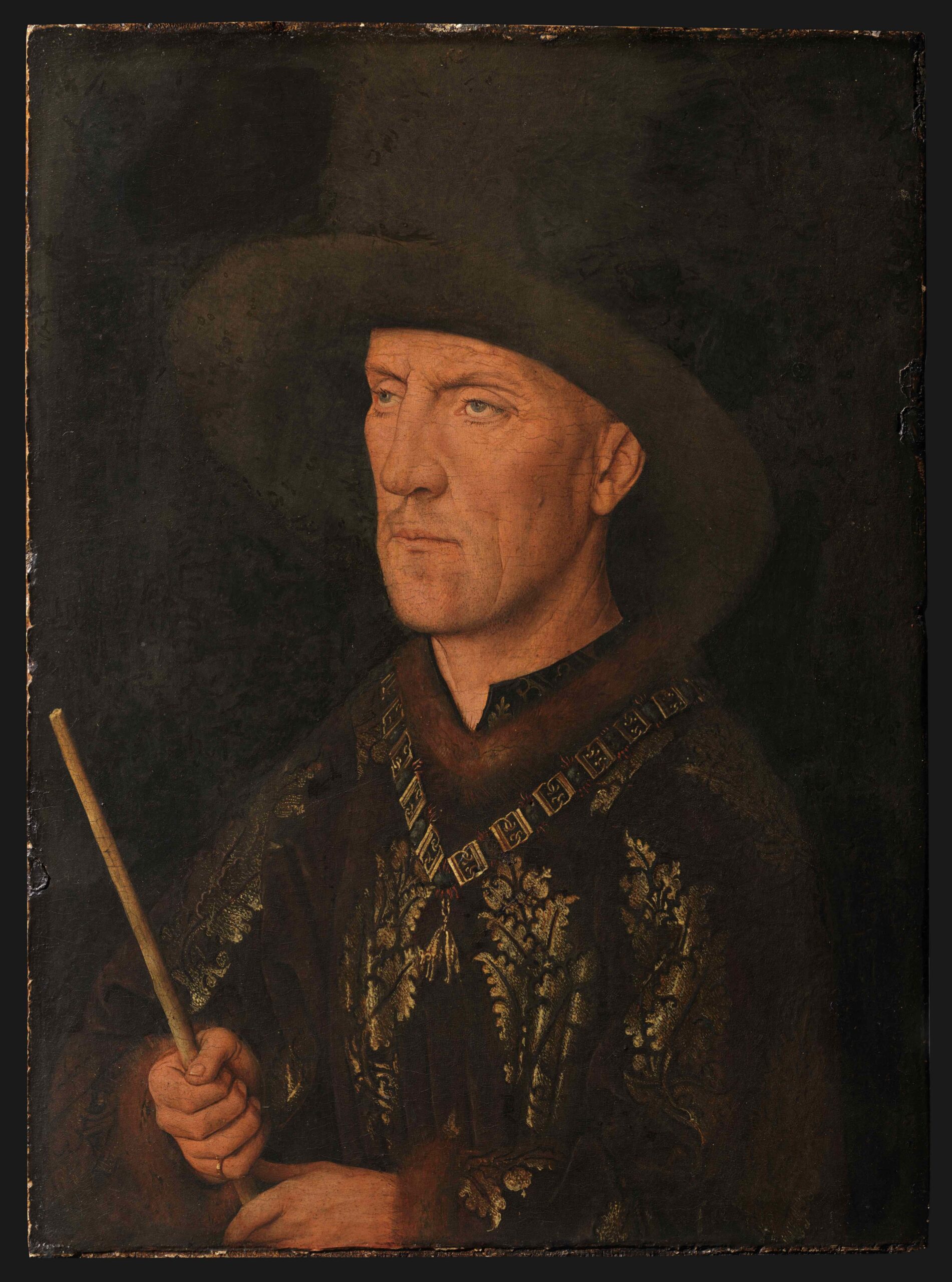 Jan van Eyck, Portrait of Baudouin de Lannoy, c. 1435, Gemäldegalerie der Staatliche Museen zu Berlin – Preussischer Kulturbesitz, Berlin
Jan van Eyck, Portrait of Baudouin de Lannoy, c. 1435, Gemäldegalerie der Staatliche Museen zu Berlin – Preussischer Kulturbesitz, Berlin© KIK-IRPA, Brussels
Oil paint
Jan van Eyck has long been seen as the inventor of oil painting, which is not correct. In actual fact, he refined and harnessed this new medium in a way that enabled him to depict reality in an unprecedentedly realistic manner. The optical revolution he caused in doing so is the result of his extremely sophisticated oil painting technique, his capacity for close observation and his special knowledge of optical light phenomena; not just the play of light and shadow, but also the way in which light moves in space, is absorbed in folds, reflected off convex and concave armour and naturally finds its way through transparent surfaces like water, glass or precious stones. This gives rise to an imaginary space that seems so real that we have difficulty resisting the urge to step into it.
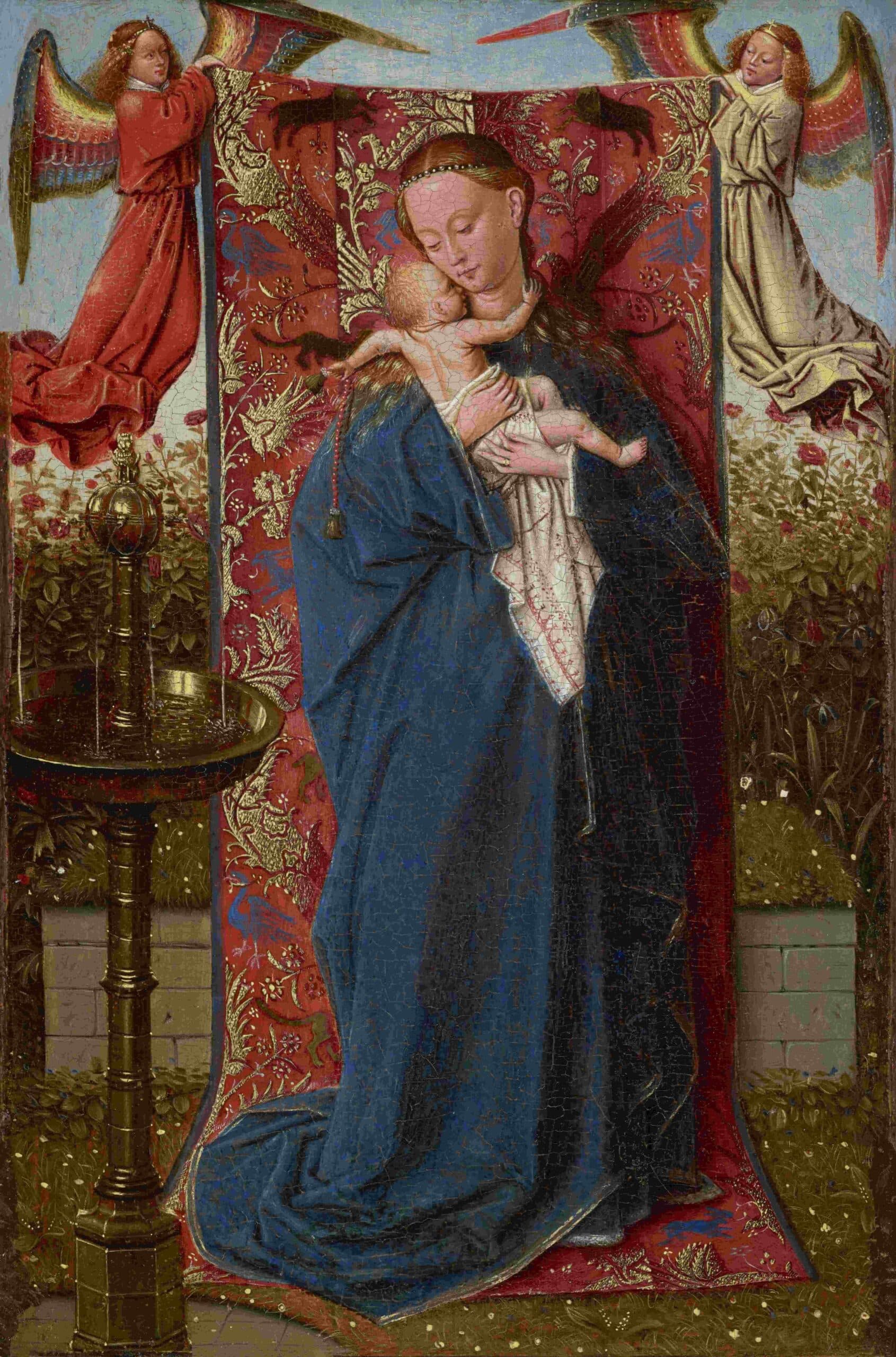 Jan van Eyck and workshop, The Madonna at the Fountain, c.1440, private collection
Jan van Eyck and workshop, The Madonna at the Fountain, c.1440, private collection© Courtesy of the Frick Collection
Van Eyck’s art was not only technically innovative, it was also erudite. It refers not only to the Old and New Testaments but also to antiquity. As a pictor doctus or learned artist avant la lettre, who kept up with the artistic debates of his time, he was not only aware of geometry and optics but also well versed in literature. The fact that he was one of the first artists to sign his work shows a high level of self-awareness. Following noble tradition, he also adopted a motto: als ich kan (‘as I am able’), in the sense of, ‘I do my utmost best to paint to the best of my abilities.’
Restored outer panels
All accomplishments of this optical revolution have crystallised in the Adoration of the Mystic Lamb, Jan van Eyck’s earliest dated work, which according to the inscription on the frame of the outer panels was started by his brother Hubert but finished by Jan after Hubert’s death. The outer panels of this exceptional altarpiece will lead visitors at Ghent’s Museum of Fine Arts through the exhibition and will primarily function as an introduction to various themes, such as ‘Sin and Redemption’ in Adam and Eve, ‘Space’, ‘Mother and Child’ and ‘The Word of God’ in The Annunciation, ‘The Madonna in the Church’ and ‘The Painted Statue’ in the statues of the St Johns, ‘The Individual’ and ‘The Divine Portrait’. The route will move between panoramic scenes and closed, contemplative spaces, it will evoke the exchange between the material and the spiritual, zoom in on the path from the macro- to the microcosm and outline the transition from the late medieval community to the individual.
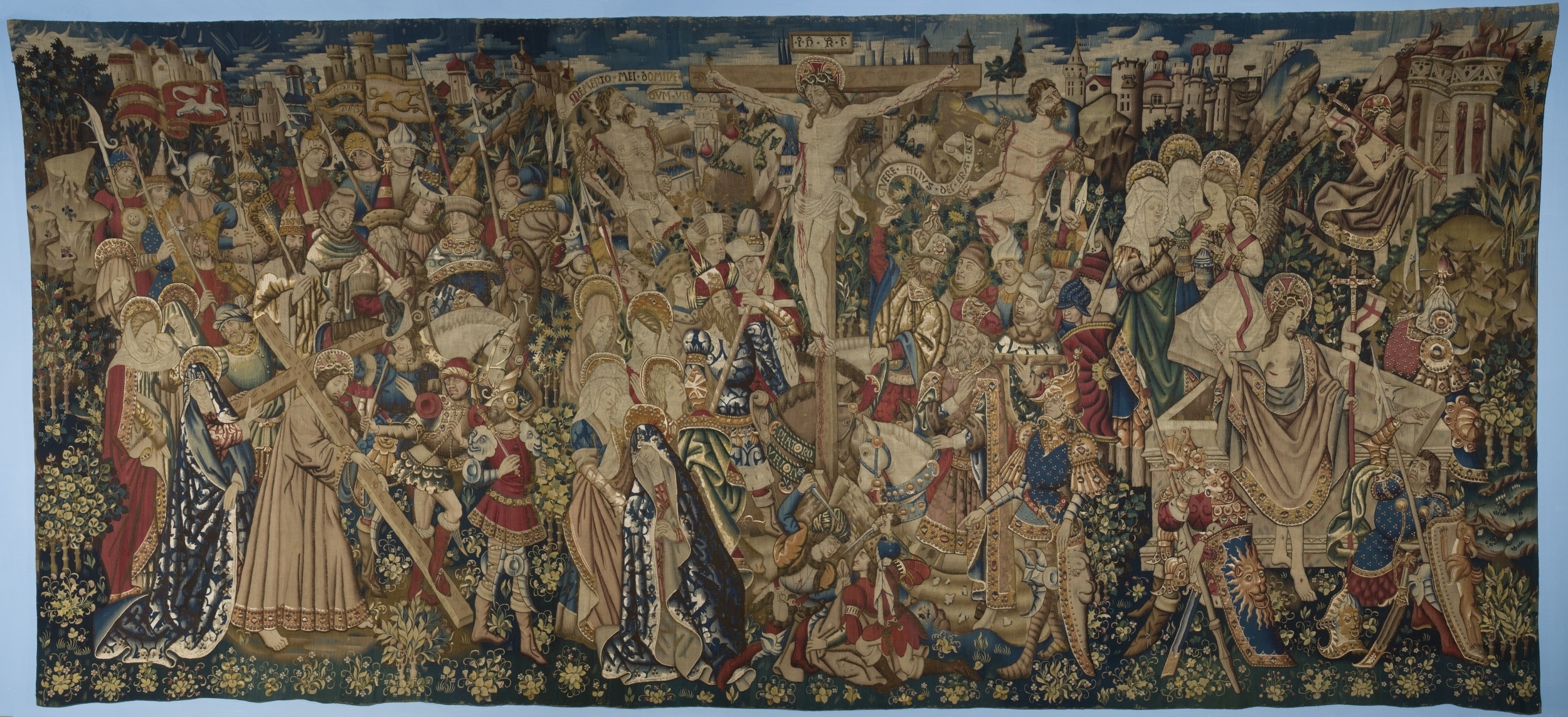 Anonymous (Tournai), Tapestry with Scenes from the Passion of Christ: Christ Carrying the Cross, The Crucifixion and The Resurrection, c. 1445-1455, Royal Museums of Art and History of Belgium, Brussels
Anonymous (Tournai), Tapestry with Scenes from the Passion of Christ: Christ Carrying the Cross, The Crucifixion and The Resurrection, c. 1445-1455, Royal Museums of Art and History of Belgium, Brussels© KMKG, Brussels
In order to place Van Eyck’s optical revolution in a broader perspective, his works are displayed alongside paintings by Italian peers such as Gentile da Fabriano, Fra Angelico, Pisanello, Masaccio and Benozzo Gozzoli, who also set in motion an artistic revolution in Florence, painting in tempera and using mathematical perspective.
After the exhibition the outer panels of the Adoration of the Mystic Lamb will return to St Bavo Cathedral where they will be placed in the display of Van Eyck’s famous altarpiece. On 6 June 2020 a new visitors’ centre will open in the cathedral. The final phase of restoration of the Ghent Altarpiece will take place starting in 2021, probably continuing until 2024.
OMG! Van Eyck was here
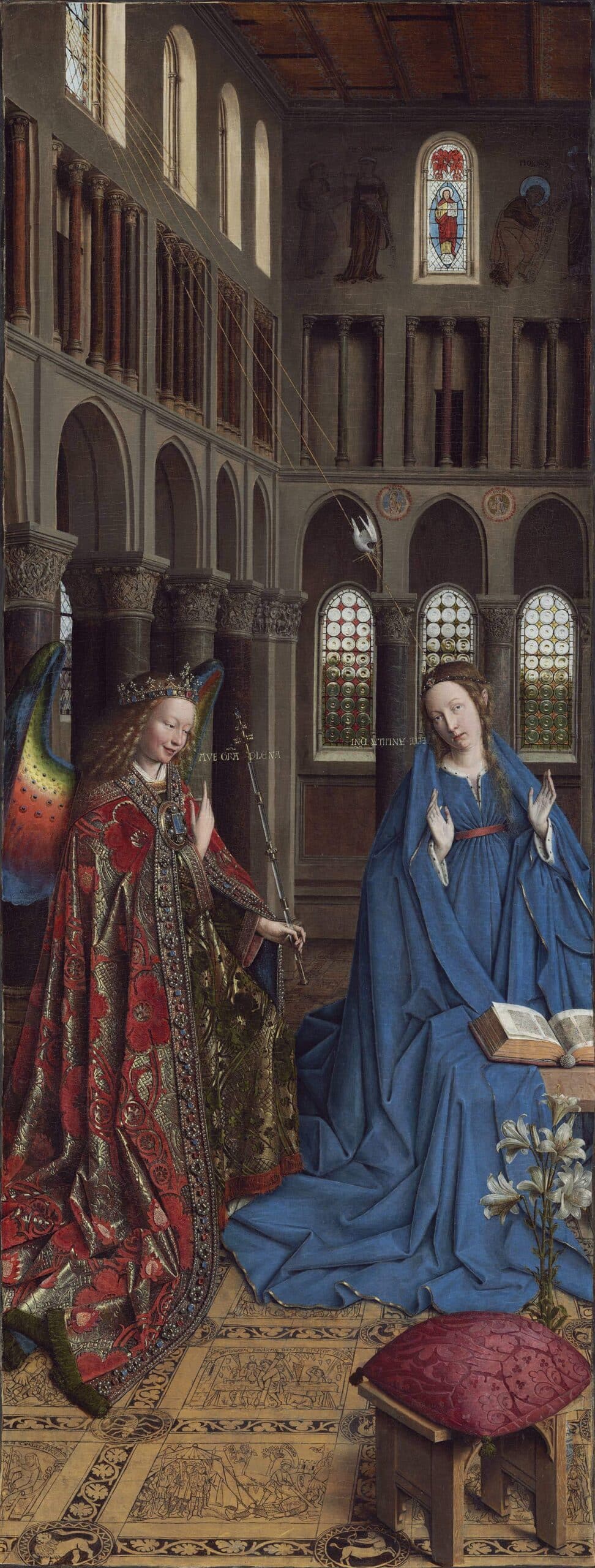 Jan van Eyck, The Annunciation, c. 1434-1436
Jan van Eyck, The Annunciation, c. 1434-1436National Gallery of Art, Washington, Andrew W. Mellon Collection
Besides the exhibition in the Museum of Fine Arts in Ghent, there are several other initiatives and exhibitions that place Van Eyck in the spotlight, often alongside his contemporaries. Under the title OMG! Van Eyck was here
the city of Ghent in collaboration with Visit Flanders is organising a cultural touristic programme to include an exhibition at the Design Museum, a reprise of Milo Rau’s play Lam Gods and special events in the framework of the Ghent Floralies, the Festival de Flandre and the music festival Odegand.
The recently restored Hof van Busleyden in Mechelen, the palace where three successive generations of Habsburg princes and princesses spent their childhoods, will be putting on the exhibition Children of the Renaissance, for the first time bringing together children’s portraits painted for the court of Mechelen. Eye-catchers include the childhood portraits of Jan Gossaert, Juan de Flandes, Pieter van Coninxloo and Bernard van Orley.
Bruges’ Groeninge Museum
will show a documentary exhibition about Jan van Eyck’s Bruges period and the character of Joris Van Der Paele, who had an impressive career as a canon of the Roman Curia. Van Der Paele commissioned one of Van Eyck’s most important works. St Peter’s Church in Leuven will also exhibit a mixed-reality installation, whereby the famous triptych The Last Supper by Flemish primitive Dieric (Dirk) Bouts will come to life in the vibrant Leuven of the past and present.
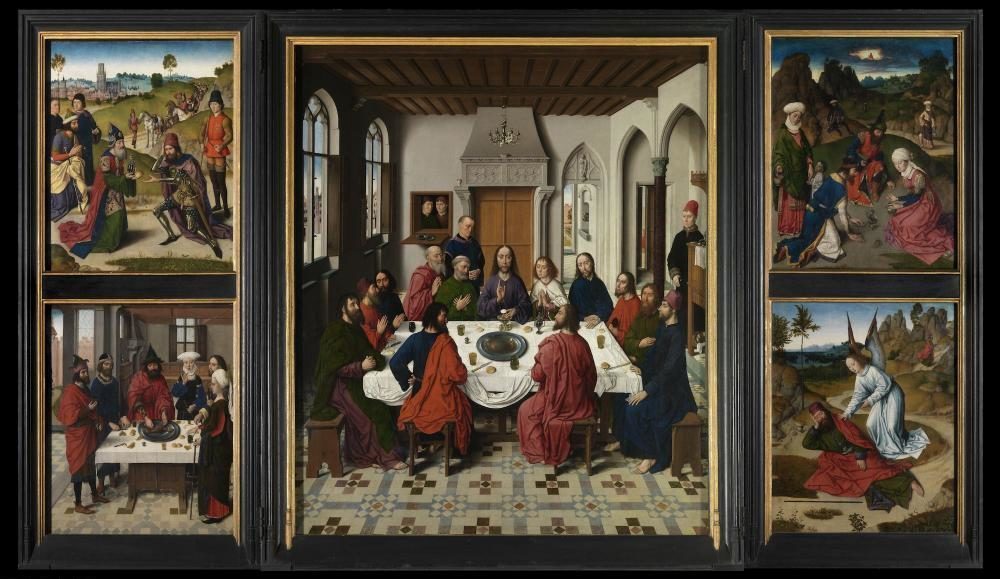 Dieric Bouts, The Last Supper, ca. 1464–1468, St. Peter's Church, Leuven
Dieric Bouts, The Last Supper, ca. 1464–1468, St. Peter's Church, Leuvencollection Museum M., Leuven
15 May 2020 will be a special date. That day sees the opening of the Library of the Dukes of Burgundy at the Royal Library of Belgium in Brussels, a new museum completely dedicated to this 15th-century collection including a great many magnificently illuminated manuscripts.

